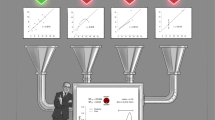Abstract
The purpose of this paper is to discuss and compare the two giants in the history of economic thought, J. M. Keynes and F. H. Knight, with special reference to risk, probability, and uncertainty. It is in 1921 that both of them published apparently similar books on the economics of risk and uncertainty. While Knight’s contribution on risk and uncertainty is now well recognized, Keynes’ accomplishments on probability and uncertainty have been rather ignored in the shadow of his most famous book The General Theory of Employment, Interest and Money (1936). This paper aims to focus on his earlier yet equally important book A Treatise on Probability (1921), and shed a new light on his outstanding ideas and everlasting influences on his later work including The General Theory. It is really interesting to see how Keynes’s concept of probability and uncertainty can be compared to Knight’s distinction between a measurable risk and a non-measurable uncertainty. This paper also contains some new materials such as J. R. Hicks on decision and probability, thus intensively discussing how he has been influenced by the two predecessors, Keynes and Knight.





Similar content being viewed by others
Notes
It is quite probable that Keynes' romantic poem aforementioned was influenced by Hume's view of human sentiments. See Hume (1739–40). It is noted that the Keynes poem has almost completely been neglected until today, which may constitute a puzzle in the long history of the economic thought of risk and uncertainty.
The role of interval-valued probability in Keynes's theory was intensively investigated by Brady (2004).
For a detailed discussion on the economic thought of Knight, see Sakai (2010).
It is noted that Hicks (1979) has introduced the new idea of "gray zone," meaning that probabilities are clear and orderable outside the zone, but unclear inside. It remains an open question to see how the gray zone is related to the concept of interval-valued probability.
See Galbraith (1977), Preface.
References
Akerlof GA, Shiller RJ (2009) Animal spirits: how human psychology drives the economy and why it matters for global capitalism. Princeton University Press, Princeton
Aoki M, Aoyama H, Aruka Y, Yoshikawa H et al (2011) Important 50 keywords in the new economic lectures: what is socio-economic physics for?. Tokyo Tosho Publishing Company, Tokyo (in Japanese)
Brady ME (2004) J. M. Keynes’s theory of decision making, induction, and analogy. Xlibris Corporation, Illinois
Galbraith JK (1977) The age of uncertainty. Houghton Mifflin Company, Boston
Hicks JR (1979) Causality in economics. Basic Blackell, Oxford
Hume D (1739–40) A treatise of human nature: being an attempt to introduce the experimental method of reasoning into moral subjects. London
Kahneman D, Tversky A (1979) Prospect theory: an analysis of decision under risk. Econometrica 47:263–291
Keynes JM (1921) A treatise on probability. Macmillan, London
Keynes JM (1936) The general theory of employment, interest and money. Macmillan, London
Keynes JM (1937) The general theory of employment. Q J Econ 51(2):209–223
Knight FH (1921) Risk, uncertainty and profit. University of Chicago Press, Chicago
Krugman P (2009) The Lionel Robbins lectures. London School of Economics, London
Sakai Y (2010) The economic thought of risk and uncertainty. Minerva Publishing Company, Kyoto (in Japanese)
Sakai Y (2015) Keynes versus Frank Knight: how the two economic giants dealt with ‘the age of uncertainty. Minerva Publishing Company, Kyoto (in Japanese)
Stiglitz J (2010) Needed: a new economic paradigm. Financial Times, Friday, August 20, 2010
Acknowledgments
This paper is an extended and significantly refined version of Sakai (2015) written in Japanese. I am grateful to editors and anonymous referees of this journal for very useful comments. This work was partly supported by Grant-in-Aid for Science Research (C) No. 25512010 from the Japanese Ministry of Education, Science, Sport, Culture and Technology.
Author information
Authors and Affiliations
Corresponding author
About this article
Cite this article
Sakai, Y. J. M. Keynes on probability versus F. H. Knight on uncertainty: reflections on the miracle year of 1921. Evolut Inst Econ Rev 13, 1–21 (2016). https://doi.org/10.1007/s40844-016-0039-0
Published:
Issue Date:
DOI: https://doi.org/10.1007/s40844-016-0039-0




